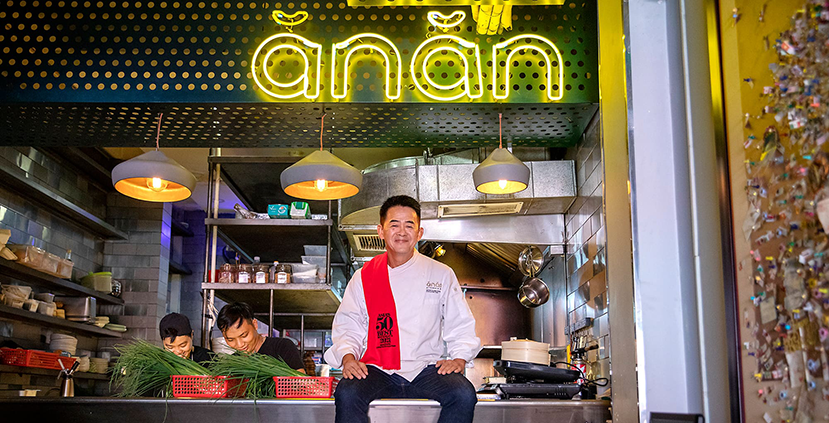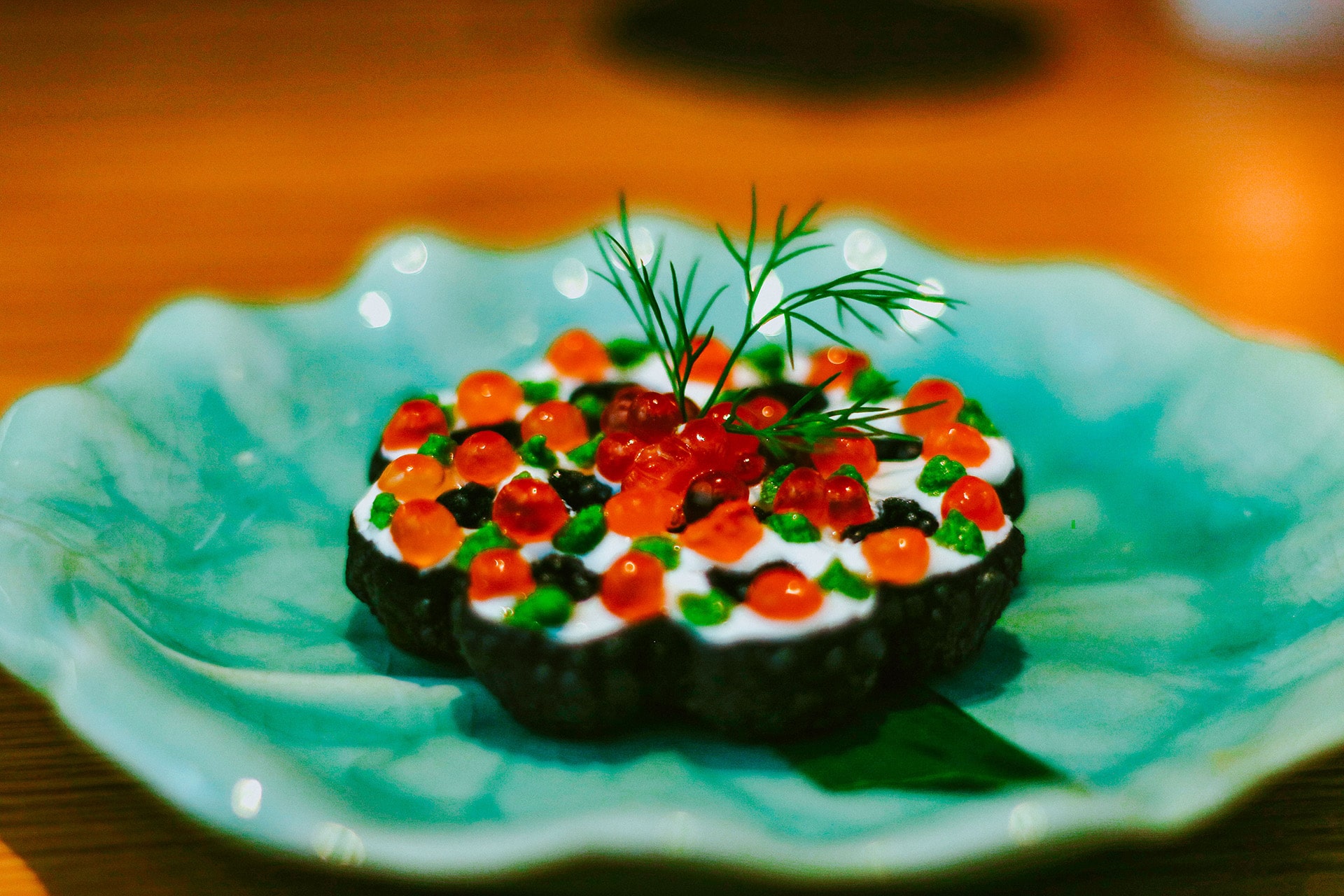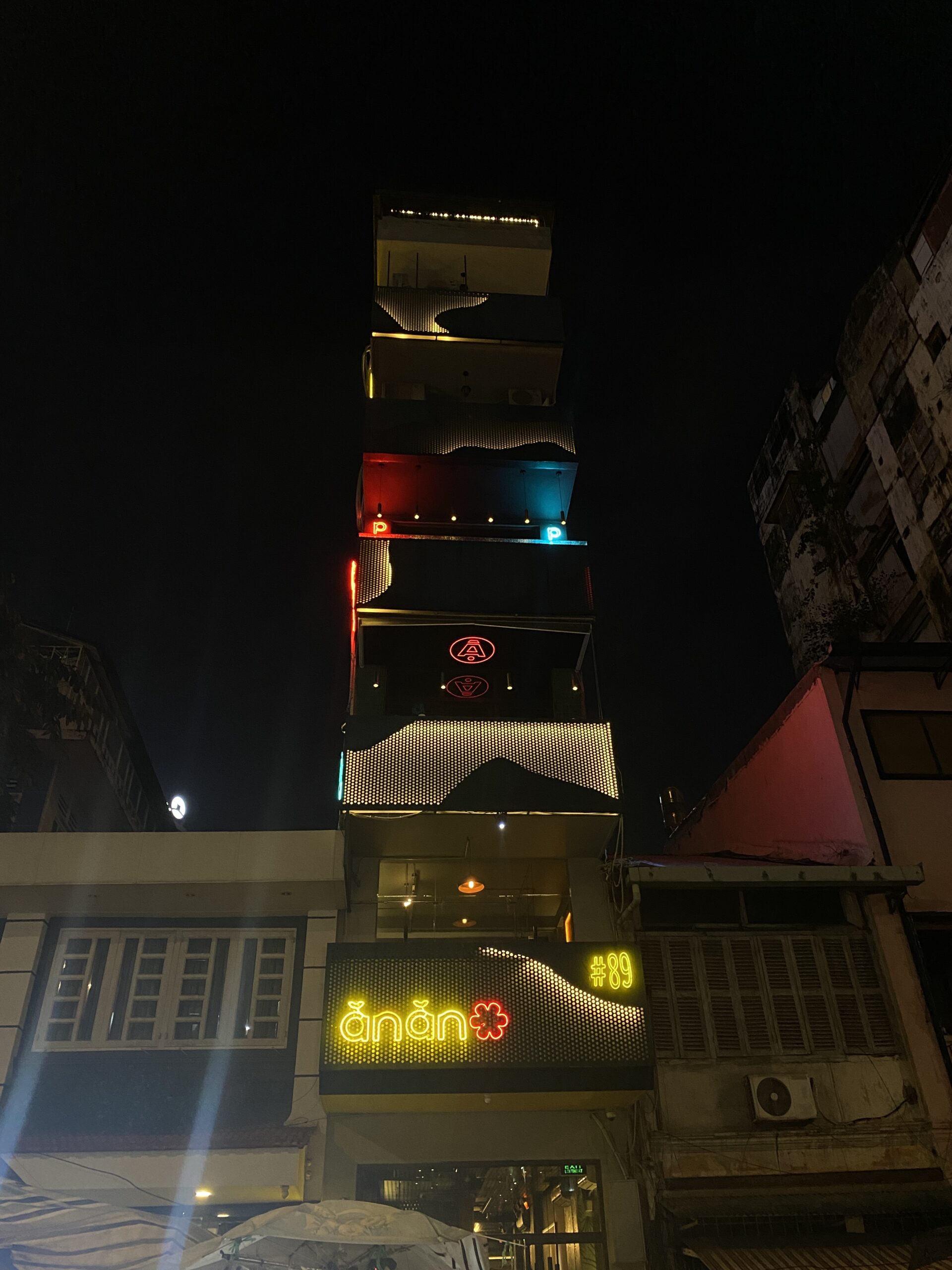
Reinventing an entire cuisine is no easy feat. Yet Chef Peter Cuong Franklin does so with chaotic elegance which can only be found in one city: Ho Chi Minh, Vietnam. At Anan Saigon, it is all about blending the traditional flavors of Vietnamese cuisine with classic French culinary techniques. The location of the restaurant, the building’s layout, intricate dishes and refined presentation make this dining experience a juxtaposition which balances itself out in a remarkable way.

Since 2021, Anan Saigon has clinched the title of ‘Vietnam’s Best Restaurant’ by Asia’s 50 Best Restaurants List not once, but twice. The Michelin-Starred restaurant is infamous for its modern approach to Vietnamese cuisine, transforming the dining experience into an interactive journey. The restaurant is the brainchild of Vietnamese-American chef, Peter Cuong Franklin. Since first opening, it has earned Vietnam’s first and only Michelin Star. The location, establishment and translation of the name — in Vietnamese, ‘Anan’ directly means ‘eat eat’ — is enough to create intrigue, and so is the chef’s backstory.
Franklin had to flea Saigon in 1975 when he was just 12-years-old during the Vietnam War. He was brought to the US where he was adopted by an American family from Connecticut. This is where he grew up and where he subsequently graduated from Yale. Franklin started out by working as an investment banker before pursuing his dream to become a chef. Once he made that decision, he quit his job at Morgan Stanley and enrolled in the notorious French culinary institute, Le Cordon Bleu. Since doing so, he trained in world-renowned kitchens such as Chicago’s Alinea and Bangkok’s Nahm and even opened a restaurant in Hong Kong in 2013.

When 2017 rolled around, Franklin felt like he had to start a new chapter somewhere closer to his heritage. “I felt that mother Vietnam called me back, for some reason that I was not sure of at the time,” Franklin told the Observer. That is when he moved back to his home country and started planning what would become Anan Saigon.
The restaurant offers two tasting menus, both being the perfect introduction to what it means to reinvent Vietnamese cuisine. The Saigon Tasting Menu demonstrates why the restaurant is so known for reinterpreting the gastronomic experience to include modern twists and turns. The Chef’s Tasting Menu on the other hand, will take guests on an immersive culinary tour around the entire country, from North to South. Like with any other comprehensive Michelin-Starred restaurant, Anan Saigon also offers a wine pairing option as well as a-la-carte choices.
Chef Peter Cuong Franklin pays homage to a new Vietnam through his storytelling techniques which he implements in all his dishes. By taking inspiration from the country’s exuberant food culture and fresh ingredients, he manages to keep the experience authentic whilst simultaneously blending in French culinary techniques. The yellowtail tartare, fresh oyster and crab uni dish are just some of the seafood dishes which are presented on the Chef’s Tasting Menu. Yet it isn’t kept as simple as that.

The textures play a huge factor in this particular gastronomic journey. From water buffalo meat wrapped in betel leaves to the crispy French tart incorporated in the menu’s caviar dish, guests are guaranteed to explore a variety of tasteful explosions. The most surprising conclusion comes with the dessert. Coconut ice cream paired with Oscietra caviar may not seem like it should work. Then again, Anan Saigon is full of surprises; many of which will be left to the imagination.
One characteristic which cannot be left to the imagination, however, is its location. It is one which only creates even more intrigue. Located in a random street within one of Ho Chi Minh’s wet markets on Tôn Thất Đạm Street, Anan Saigon could not look more unassuming from the outside. Bar the semi-modern exterior, there is no way to tell that what lies ahead of its glass doors is a Michelin Star. Its surroundings is synonymous with authentic Vietnam as vendors line the streets and motorcycles try to squeeze through. What does set it a part, however, is the building: a five-story tube house which is light up with neon accents on all floors.

This type of building exemplifies traditional Vietnamese architecture and resembles a tall, thin structure. One may wonder why there are so many floors in a restaurant, but at Anan Saigon they all have a purpose. Above the ground floor — where some of the seating areas and open-view kitchen are located — is the cocktail bar, Nhau Nhau. Playing on the same word game as the restaurants name, Nhau Nhau translates to ‘drink drink’ in Vietnamese.

The restaurant even pays tribute to the one of the country’s national dishes, Pho, by dedicating the entire third floor to it. The Pot Au Pho noodle bar is located just above the cocktail bar where guests can enjoy a casual yet elevated Pho meal. Of course, after that comes the restaurant’s Rooftop Dining Bar. Not much has to be said about that except for a notable mention regarding the breathtaking views of the city’s center. Upon visiting Anan Saigon, this part of the experience cannot be missed.
 This gastronomic journey is far from a European fine dining experience. Anan Saigon exudes the organized chaos that Ho Chi Minh represents, bringing to the table a welcoming and fiery pace. Chef Peter Cuong Franklin has dedicated the restaurant to establishing a ‘Cuisine Mói’ — ‘New Vietnamese Cuisine’ — in a way which doesn’t disregard the elephants in the room (the classic Bahn Mi and Pho). The twists within Anan Saigon seem endless but the conclusion remains surprising and delectable.
This gastronomic journey is far from a European fine dining experience. Anan Saigon exudes the organized chaos that Ho Chi Minh represents, bringing to the table a welcoming and fiery pace. Chef Peter Cuong Franklin has dedicated the restaurant to establishing a ‘Cuisine Mói’ — ‘New Vietnamese Cuisine’ — in a way which doesn’t disregard the elephants in the room (the classic Bahn Mi and Pho). The twists within Anan Saigon seem endless but the conclusion remains surprising and delectable.